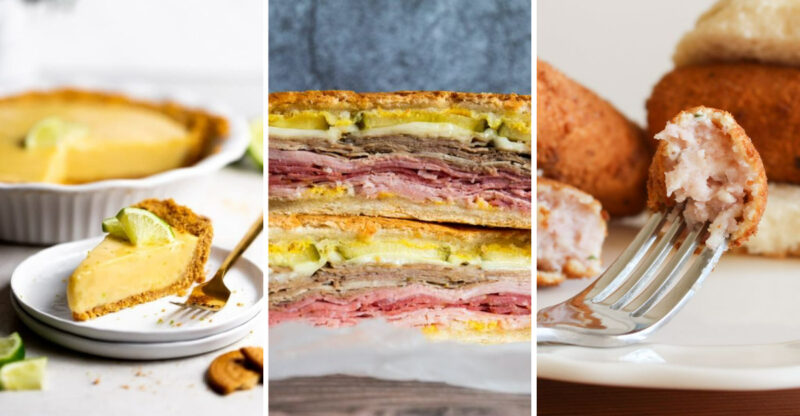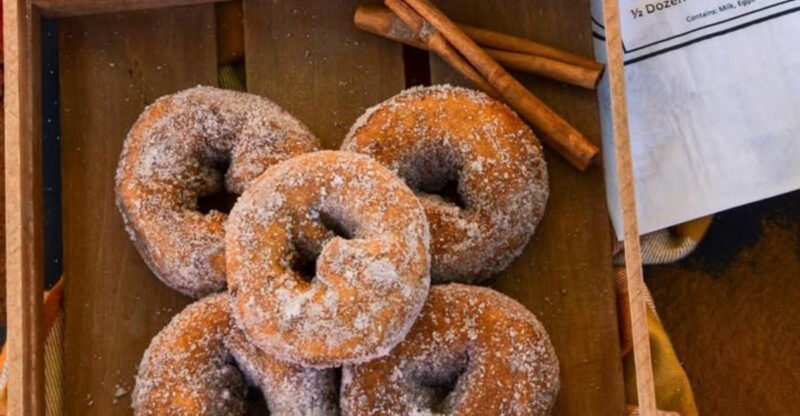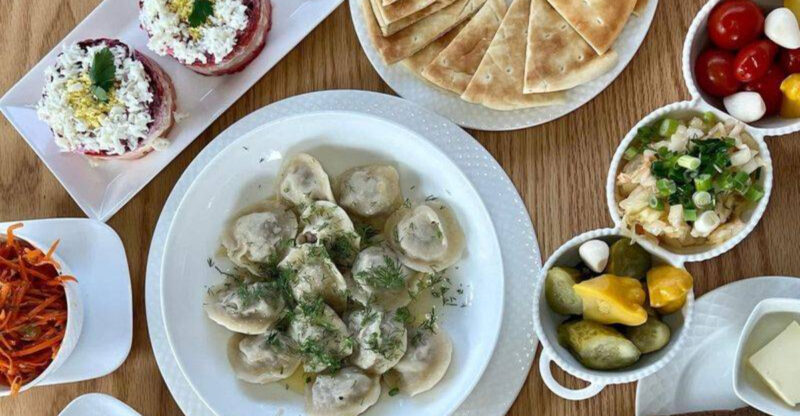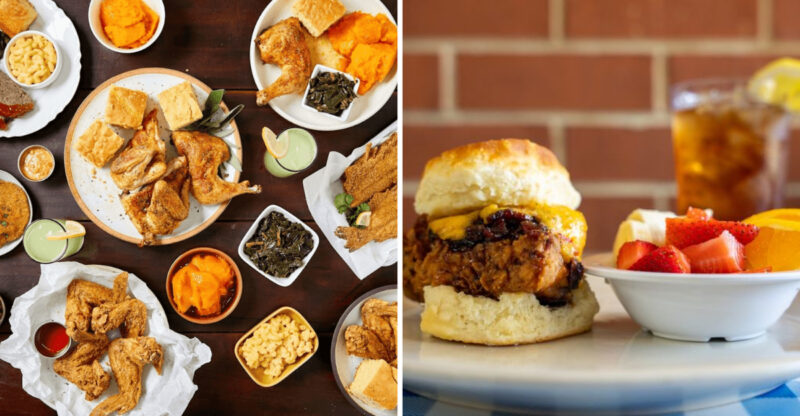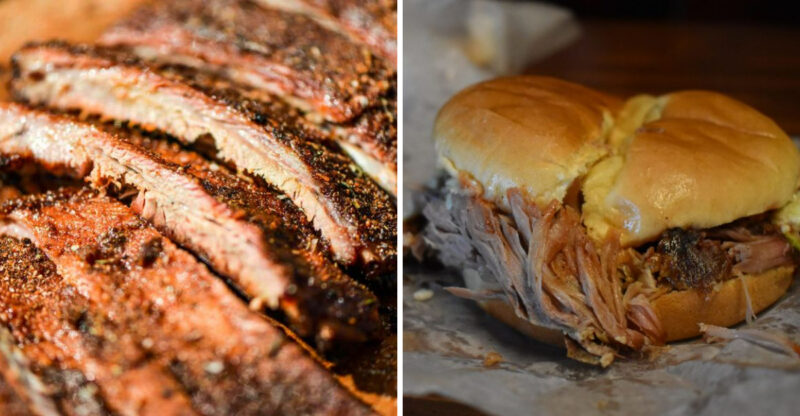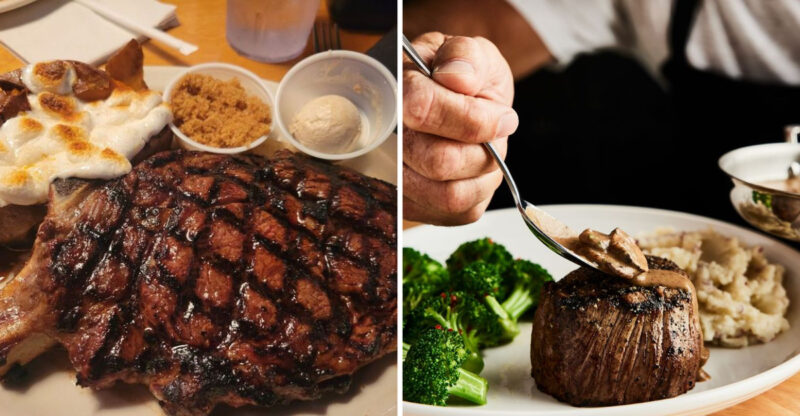20 Subtle Clues At California Mexican Restaurants You Might Miss
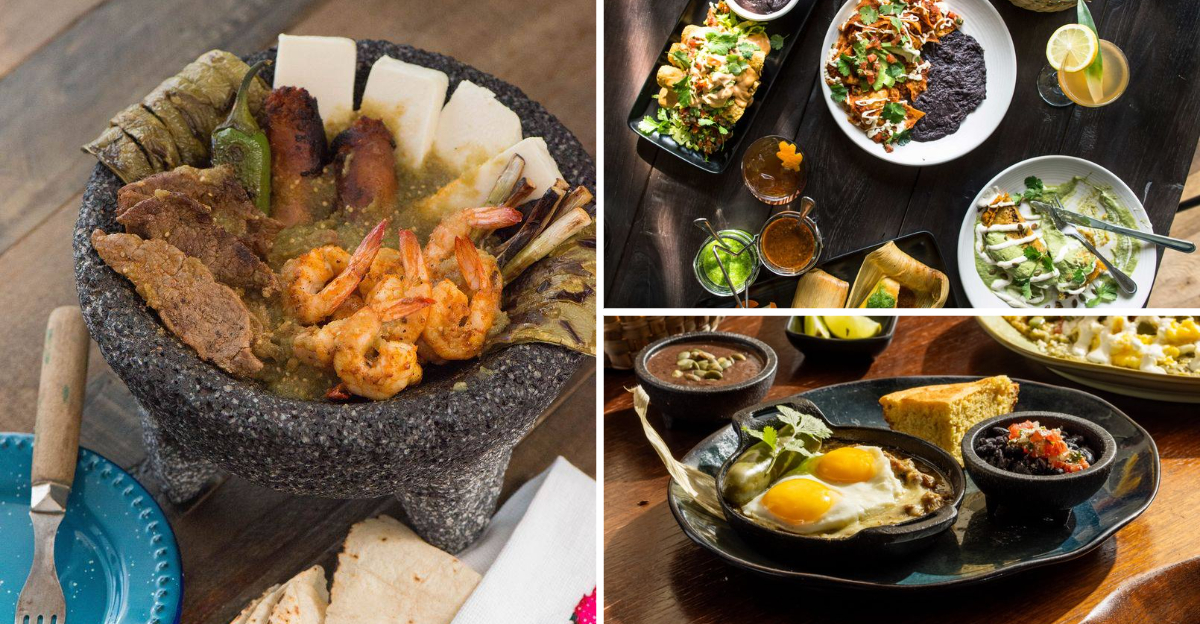
California’s Mexican restaurants offer more than just delicious food they’re packed with subtle cultural markers and authentic details.
These hidden clues can tell you a lot about the restaurant’s authenticity, regional focus, and commitment to tradition. From the moment you walk in to the final sip of your after-dinner coffee, here are twenty subtle signs that separate the truly authentic spots from the rest.
1. Salsa Served Before the Meal
Ever notice how the best California Mexican spots bring salsa to your table immediately? This isn’t just hospitality it’s tradition! Authentic restaurants prepare fresh salsa daily, often using recipes passed down through generations.
The color matters too. A deep red indicates ripe tomatoes, while darker salsas might feature roasted ingredients. Some places offer multiple options, from mild pico de gallo to fiery habanero concoctions.
Family-owned restaurants might even have their signature salsa that locals rave about. If you see people requesting extra salsa to take home, you’ve struck gold that’s the mark of something special worth coming back for.
2. Chips Arriving in a Paper Bag
When your server brings tortilla chips in a simple brown paper bag instead of a basket, you’ve found a place that knows its stuff. This old-school presentation keeps chips warm and crispy while absorbing excess oil a technique borrowed directly from Mexican street food vendors.
The bag itself might be plain or stamped with the restaurant’s logo. As you open it, that first waft of warm corn aroma tells you they’re freshly made, not from a factory package.
Many traditional spots will refill your paper bag throughout the meal without being asked. This thoughtful touch shows they understand the importance of having fresh chips for scooping up every last bit of those house-made salsas.
3. Cilantro Garnish on Everything
If nearly every dish arrives with a sprinkle of fresh cilantro on top, you’re likely in a place that values authentic presentation. This isn’t just for looks cilantro adds a bright, citrusy finish that balances rich flavors in traditional Mexican cuisine.
Truly authentic spots will use whole cilantro leaves rather than chopped bits. They understand this herb is more than decoration; it’s an essential flavor component. Watch how the kitchen handles it too cilantro is always added at the last moment to preserve its delicate flavor profile.
Some restaurants even grow their own cilantro in small kitchen gardens to ensure maximum freshness. That’s dedication you can actually taste in every bite!
4. Menu Featuring Regional Specials
Hidden among standard tacos and burritos, look for a special section highlighting dishes from specific Mexican regions. The most authentic California restaurants often showcase recipes from Oaxaca, Puebla, Jalisco, or wherever the owners have roots.
These regional specialties might appear on a separate insert or chalkboard, sometimes written in Spanish with English descriptions. Items like chile en nogada (Puebla), tlayudas (Oaxaca), or birria (Jalisco) indicate the kitchen takes pride in representing Mexico’s diverse culinary traditions.
If you’re feeling adventurous, ordering from this section usually rewards you with flavors you won’t find at chain restaurants. The chef might even visit your table to explain the dish’s significance a true mark of passionate ownership.
5. Freshly Made Tortillas on Display
That distinctive slapping sound coming from the kitchen? It’s the unmistakable rhythm of hands forming fresh tortillas! Some California Mexican restaurants proudly position their tortilla-making station where diners can watch this ancient craft in action.
Look for a dedicated comal (flat griddle) where tortillas bubble and brown before being whisked to your table. The best places wrap them in special cloth-lined baskets or colorful tortilleros that keep them warm throughout your meal.
Fresh tortillas have a completely different texture and aroma compared to packaged versions slightly irregular in shape, with charred spots and a heavenly corn fragrance. If the restaurant offers handmade flour tortillas too, that’s an extra special touch worth appreciating!
6. Decor with Traditional Talavera Tiles
Colorful ceramic tiles adorning countertops, tables, or walls aren’t just pretty decorations they’re Talavera, a centuries-old Mexican pottery tradition. Authentic restaurants often incorporate these hand-painted tiles as a subtle nod to Mexico’s artistic heritage.
The most traditional Talavera features cobalt blue designs on white backgrounds, though modern interpretations include vibrant yellows, greens, and reds. Family-owned establishments might display tiles brought directly from Puebla, Mexico, where this craft originated.
Beyond tables, look for Talavera in unexpected places bathroom sinks, stair risers, or framed as artwork. These beautiful pieces require significant investment and maintenance, signaling the owner’s commitment to creating an authentic environment rather than just serving food.
7. Handmade Wooden Serving Utensils
When your guacamole arrives with a beautifully carved wooden spoon instead of metal utensils, you’ve spotted a restaurant that values tradition. These molinillos, cucharas, and other wooden implements aren’t just Instagram-worthy they’re the authentic tools Mexican cooks have used for generations.
The wood itself tells a story, often made from indigenous Mexican trees like mesquite or cypress. Many restaurants source these utensils directly from artisan communities in Mexico, supporting traditional craftsmanship.
Beyond their cultural significance, wooden tools actually enhance the dining experience. They don’t transfer heat or affect flavors like metal can, and they’re gentler on handmade pottery. That wooden molinillo used to froth your hot chocolate? It creates a texture no modern blender can match!
8. Warm Towels Offered Before Dining
If a server brings small, warm, damp towels before your meal begins, you’ve discovered a restaurant honoring an authentic Mexican dining tradition. This thoughtful gesture isn’t just luxurious it’s practical, preparing your hands for the many finger foods to come.
The towels themselves might be simple white cloths or colorfully embroidered napkins, often lightly scented with citrus. This custom reflects the Mexican emphasis on cleanliness before sharing communal dishes like molcajete platters or taco spreads.
What makes this detail special is how it transforms a casual meal into something more ceremonial. While not every authentic place offers this touch, those that do are usually family-owned establishments wanting to recreate the welcoming feeling of dining in a Mexican home.
9. House-Made Hot Sauce Bottles on Table
Those mysterious unlabeled bottles sitting on your table aren’t afterthoughts they’re liquid gold! Authentic California Mexican restaurants often create their own signature hot sauces, displayed in repurposed bottles or traditional Mexican cruets.
Unlike commercial versions, these house-made concoctions vary wildly in heat, color, and ingredients. Some feature smoky chipotle, others showcase the grassy heat of serrano peppers. The most dedicated restaurants ferment their sauces for complex flavors that develop over weeks.
Ask your server about what makes their sauce special, and you’ll likely get a passionate explanation about regional peppers or a closely-guarded family recipe. If they offer bottles to purchase and take home, that’s the ultimate sign their sauce has developed a devoted following!
10. Margarita Glasses Salted in an Unusual Way
Look closely at that margarita glass rim is it sporting something more interesting than plain white salt? The most authentic California Mexican restaurants elevate this cocktail detail with creative rimming techniques that enhance the drinking experience.
Tajín (chile-lime salt) is a popular authentic choice, adding tangy spice that complements the citrus. Some places use sal de gusano (worm salt) from Oaxaca or house-blended mixtures with dried hibiscus, ground chiles, or citrus zest.
The application method matters too. Traditional spots often moisten only half the rim, allowing you to alternate between salted and unsalted sips. This thoughtful touch shows the bartender understands margarita traditions beyond what’s taught in standard bartending courses a subtle sign of authenticity worth appreciating!
11. Decorative Papel Picado Hanging
Those colorful paper banners fluttering from the ceiling aren’t just festive decorations they’re papel picado, a traditional Mexican folk art with deep cultural roots. Authentic restaurants display these intricate hand-cut designs as a connection to Mexican heritage, not just as generic party decor.
The most traditional papel picado features tissue paper in vibrant colors with patterns cut by hand using special chisels. Look for designs that change with the seasons or celebrate specific Mexican holidays like Day of the Dead or Mexican Independence Day.
Family-owned restaurants often import these delicate art pieces directly from Mexican artisans in San Salvador Huixcolotla, Puebla, where this craft has been perfected over generations. The care taken to display and regularly replace these fragile decorations speaks volumes about a restaurant’s commitment to cultural authenticity.
12. Large Clay Olla for Water or Agua Fresca
That large earthenware jug filled with water or fruity agua fresca isn’t just decorative it’s a traditional Mexican olla, and it actually improves your drink! These porous clay vessels naturally cool liquids through evaporation while imparting subtle mineral notes that plastic or glass can’t match.
Watch how servers handle these vessels with respect, often using both hands. Many restaurants import these handcrafted containers directly from Mexican pottery centers like Oaxaca or Puebla, supporting traditional artisans.
The most authentic places rotate seasonal agua frescas in these ollas jamaica (hibiscus) in summer, horchata year-round, or perhaps tamarindo when available. If you notice slight variations in the pottery’s appearance, that’s another good sign it means they’re handmade rather than mass-produced.
13. Small Plates Meant for Sharing
When your server brings extra small plates without being asked, they’re not just being helpful they’re facilitating the traditional Mexican style of communal dining. This subtle gesture shows the restaurant understands that authentic Mexican meals are meant to be shared among everyone at the table.
These plates (often colorful ceramic or Talavera-style) allow diners to create their own combinations from family-style main dishes. The most authentic spots provide enough for everyone plus extras, anticipating the Mexican custom of trying a bit of everything.
If the server also brings small bowls for salsa and separate plates for bones or shells, you’ve found a place that truly honors Mexican dining etiquette. These thoughtful details create the convivial atmosphere that makes Mexican meals such joyful social experiences.
14. Seasonal Ingredients Highlighted on Menu
When you spot menu callouts for huitlacoche in summer, chiles en nogada in fall, or special Lenten dishes in spring, you’ve found a restaurant following Mexico’s seasonal cooking traditions. These temporary offerings reflect the way Mexican cooking has always been tied to what’s freshly available.
Truly authentic places might feature handwritten specials or menu inserts that change weekly based on what’s available at local farmers’ markets. Look for dishes highlighting nopales in spring, mangos in summer, or squash blossoms when in season.
Some restaurants even explain the significance of seasonal ingredients on their menus, educating diners about Mexican food traditions. This educational approach shows deep respect for the cuisine’s agricultural roots and demonstrates the chef’s commitment to authentic flavors rather than year-round consistency.
15. Molcajete Used for Guacamole Presentation
When your guacamole arrives in a heavy stone bowl with three legs, you’re experiencing one of Mexico’s oldest culinary traditions. This volcanic rock vessel isn’t just for show it’s a molcajete, the traditional Mexican mortar and pestle that predates European contact.
Authentic restaurants often prepare guacamole tableside in these ancient tools, allowing the porous stone to grip ingredients while grinding, creating textures impossible to achieve in metal or glass bowls. The weight and material retain temperature well, keeping your guacamole cool throughout the meal.
Many family-owned establishments treasure their molcajetes, some brought directly from Mexico or passed down through generations. If you notice slight variations in size or texture, that’s a good sign each is uniquely handcrafted by artisans who’ve been making them for centuries.
16. Fresh Lime Wedges Always on Side
Those generous lime wedges accompanying nearly every dish aren’t just garnish they’re an essential flavor component in authentic Mexican cuisine. Traditional restaurants understand that a squeeze of fresh lime transforms everything from tacos to soups to grilled meats.
Notice how the limes are presented: the most authentic places serve them in abundance, often on their own small plate rather than perched on the rim of your dish. They’re typically Mexican limes (smaller and more aromatic than Persian varieties) and freshly cut rather than pre-sliced.
If your server brings additional limes without being asked when you’re halfway through your meal, that’s a subtle sign of authenticity. It shows they understand the lime isn’t optional but integral to experiencing the dish as it would be served in Mexico.
17. Staff Offering Recommendations Without Prompt
When your server enthusiastically suggests specific dishes without being asked, they’re not just upselling they’re sharing insider knowledge about what’s exceptional that day. Authentic Mexican restaurants often train staff to guide diners toward house specialties or dishes that aren’t well-known to American palates.
Listen for recommendations that include personal touches: “My grandmother’s recipe” or “The chef just received these chiles from Oaxaca yesterday.” These comments reveal genuine pride in specific menu items rather than generic suggestions.
The most authentic places encourage servers to explain traditional eating methods too which items should be wrapped in tortillas, which sauces pair best with certain dishes, or how to tackle unfamiliar items like whole fish. This educational approach shows the restaurant wants you to experience their food as it’s meant to be enjoyed.
18. Family-Style Platters for Groups
If the menu features oversized communal dishes designed for sharing, you’ve found a restaurant honoring Mexico’s family-centered dining traditions. These molcajetes, parrilladas, or bandeja-style presentations aren’t just impressive they reflect how Mexicans typically eat together.
These spectacular platters often arrive sizzling hot, creating a memorable moment as they’re placed at the table’s center. The most authentic versions include a thoughtful assortment of proteins, vegetables, and accompaniments arranged to be accessible to everyone.
Watch how servers handle the presentation they’ll often explain the components and suggest how to build the perfect bite. Some restaurants even include a ritual element, like flaming cheese or tableside salsa preparation. This interactive dining style creates the convivial atmosphere that’s central to Mexican food culture.
19. Authentic Mexican Coffee Served After Meal
If your server offers café de olla instead of regular coffee after your meal, you’ve discovered a restaurant committed to authentic Mexican dining traditions from start to finish. This cinnamon-infused coffee, traditionally brewed in a clay pot with piloncillo (unrefined cane sugar), provides the perfect sweet conclusion to a spicy meal.
The presentation matters too authentic places serve it in small clay mugs rather than standard coffee cups. Some restaurants add regional touches like chocolate in Oaxacan style or a splash of Kahlúa for special occasions.
Family-owned establishments might even bring the entire clay pot to your table, allowing you to appreciate the aromatic steam and traditional brewing method. This final thoughtful touch demonstrates that the restaurant values creating a complete cultural experience, not just serving food.
20. Handwritten Daily Specials in Spanish
That chalkboard with Spanish words and no English translation isn’t an oversight it’s a subtle signal that you’ve found a place catering to those who know authentic Mexican cuisine. These handwritten specials often feature dishes too regional or seasonal to include on the regular menu.
The lack of translation is actually intentional in many family-owned spots. It encourages conversation with staff who can explain these special items with enthusiasm and personal context. Listen for phrases like “just like my abuela makes” or “we can only make this when we find the right chiles.”
If you notice the specials change frequently sometimes daily that’s another good sign. It indicates the kitchen is cooking based on available ingredients and inspiration rather than a fixed menu, just as they would in a home kitchen in Mexico.

